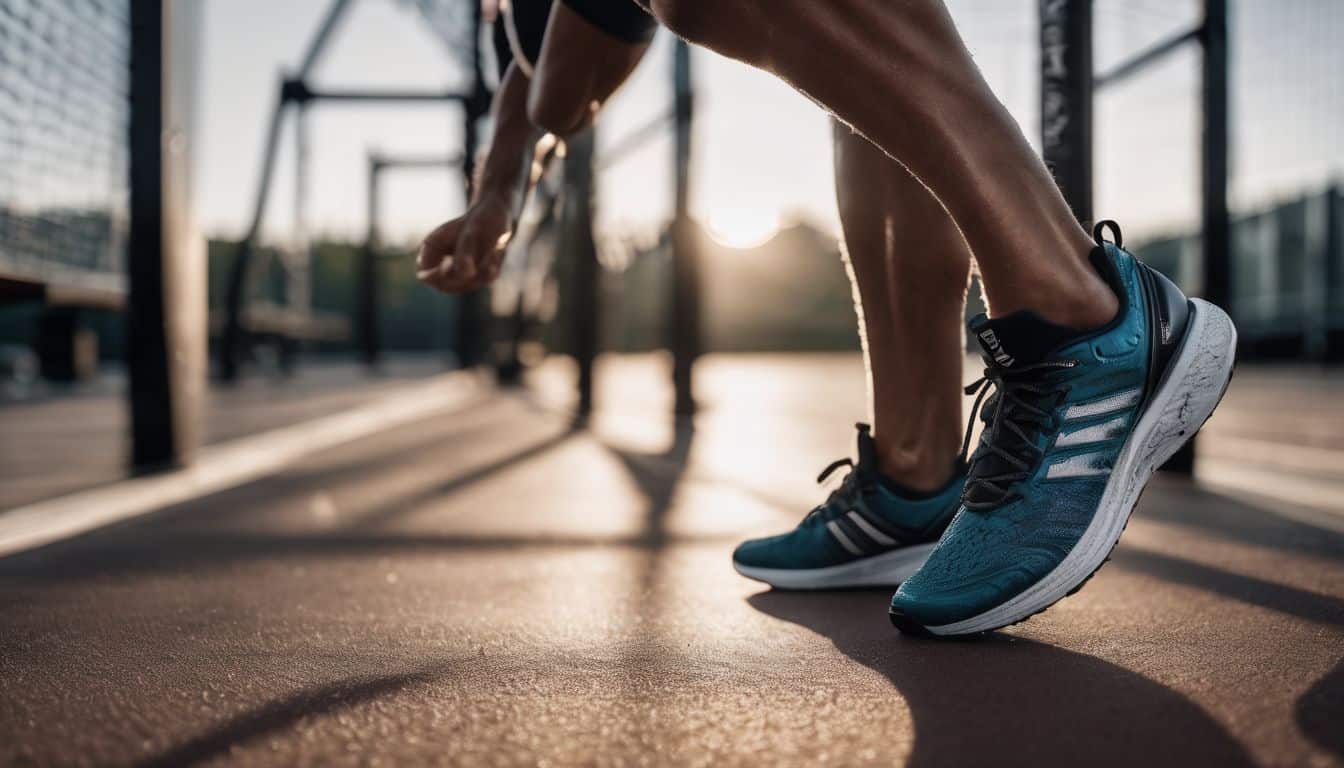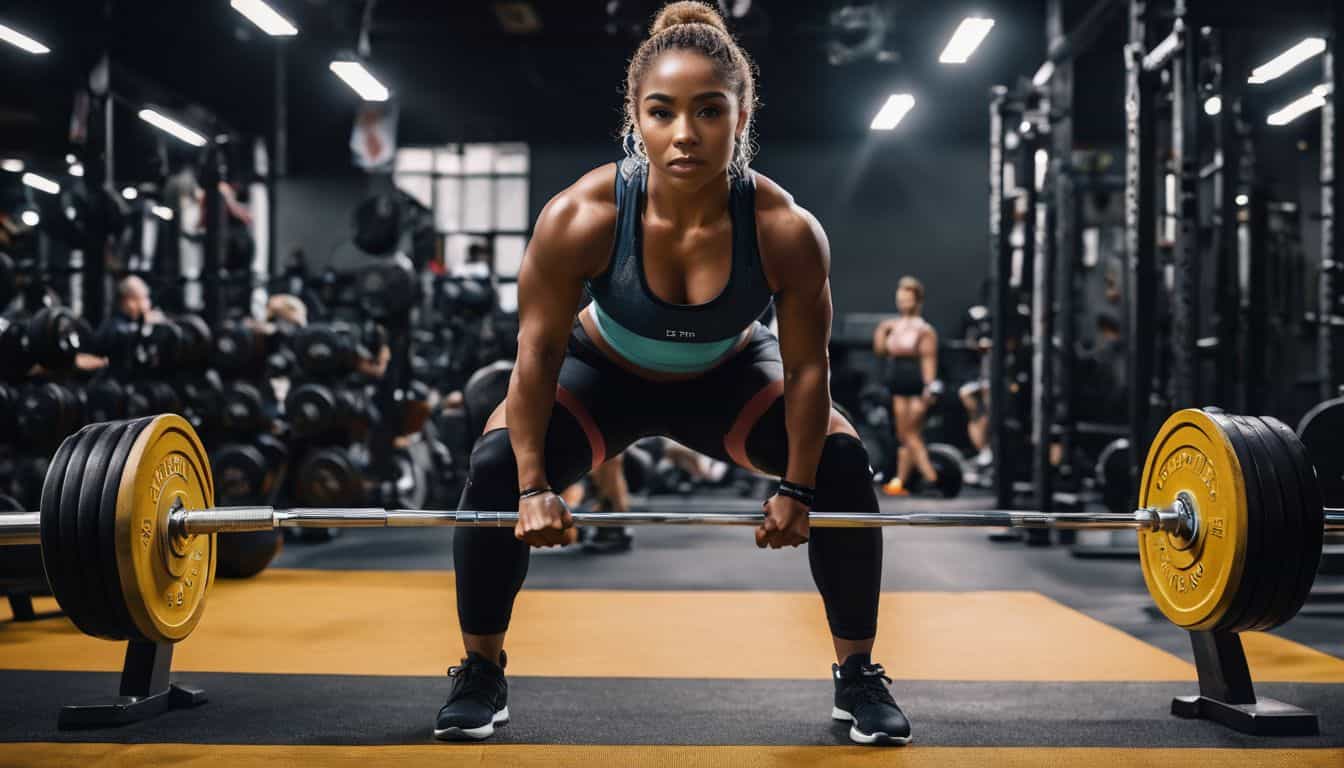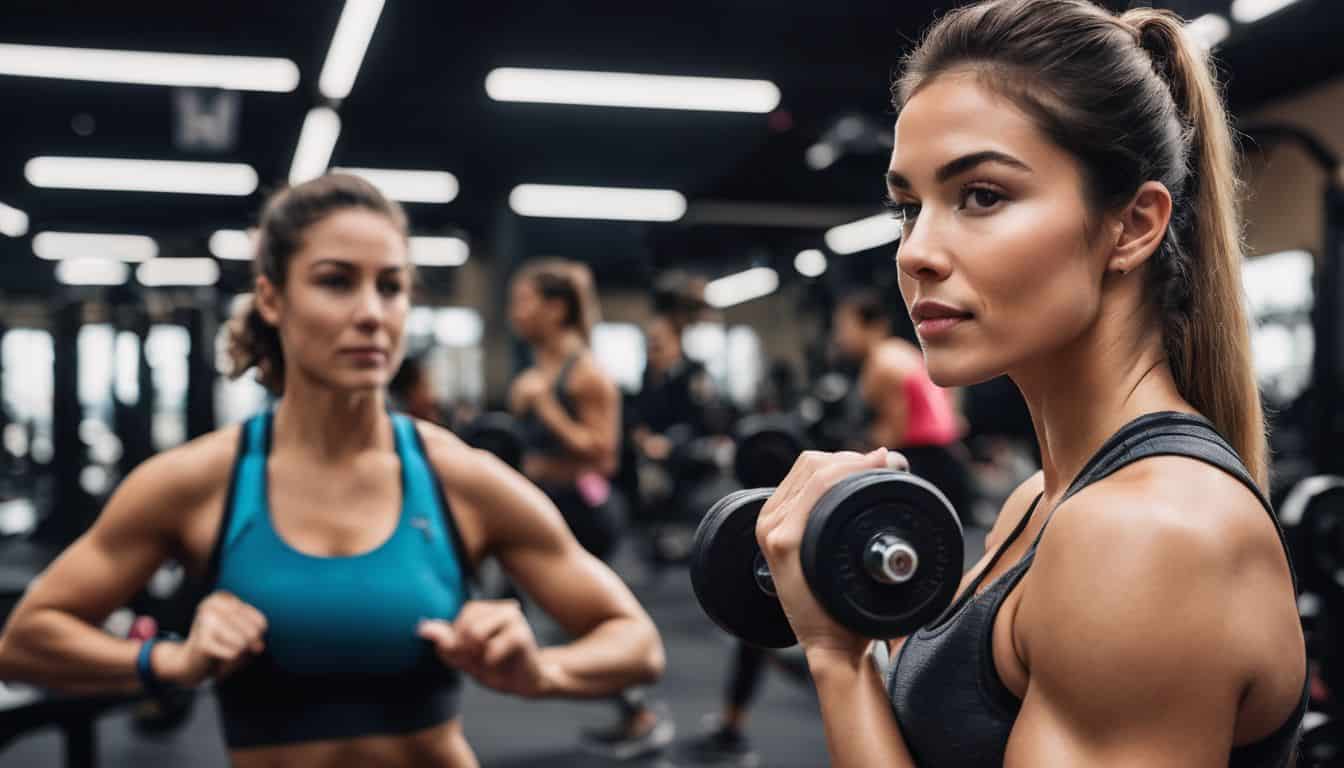Ever found yourself questioning whether your trusty running shoes can pull double duty as weight training footwear? Believe me, you’re not alone. As a fellow runner myself, I couldn’t help but ponder the same question about my beloved kicks.
Turns out, when it comes to hoisting hefty weights around, we require proper support and stability – attributes that may be lacking in our usual runner’s gear. Piqued your interest? Let’s delve deeper into this topic together!
Key Takeaways
- Running shoes are designed for forward movement and lack the stability necessary for weight training.
- Weightlifting shoes offer support, stability, and a solid base for lifting heavy weights.
- Wearing running shoes during weight training can lead to poor form and an increased risk of injury.
- Cross – training shoes, barefoot training, or minimalist shoes can be alternatives for weight training footwear.
The Importance of Proper Footwear for Weight Training
Using the correct footwear for weight training is vital to ensure safety and performance.
Differences between running shoes and weightlifting shoes
When it comes to exercises such as running and weightlifting, the footwear you choose plays an integral role in your performance and safety. This is why understanding the differences between running shoes and weightlifting shoes is vital.
| Running Shoes | Weightlifting Shoes |
|---|---|
| Running shoes are designed to be lightweight to allow for quick movements and long-distance running. | Weightlifting shoes are typically heavier, prioritizing support and stability. |
| They usually have a higher heel-to-toe drop, designed to help you move forward. | Weightlifting shoes feature a raised heel to enable more depth in squats and provide balance. |
| The cushioning in running shoes is meant to absorb impact, reducing the stress on your joints during a run. | The soles of weightlifting shoes are harder to provide a stable base for lifting heavy weights. |
| Running shoes are built for forward movement, and thus, they lack lateral stability. | On the other hand, weightlifting shoes offer excellent lateral stability due to their wider base and robust construction. |
While running shoes are ideal for the track or trail, they may not provide the necessary support and stability for weight training. Therefore, if you’re into weightlifting, it’s recommended to invest in a good pair of weightlifting shoes.
Potential risks of wearing running shoes for weight training
Running shoes may not be the best for weight training. They can pose risks that many of us don’t think about. First, running shoes lack the support we need for lifting heavy weights.
This can make our feet and body feel bad after a while. Also, working out in running shoes might slow down how fast we get stronger. There’s also a higher chance of getting hurt if you use them during strength training exercises.
Wearing these kinds of gym shoes without proper support might lead to foot problems like overpronation or supination too.
Can I Wear Running Shoes For Weight Training??

Running shoes seem like a good choice for any sport. However, for weight training, they are not the best pick. Running shoes are made to help you move forward. They also have soft padding to keep your feet comfy on long runs.
This is great for running, but not so much for lifting heavy weights.
During weight training, you need a strong base to push off from and balance on. Weightlifting shoes give that solid platform with support at key places in your foot’s arch and heel.
The slanted heel helps with squats and other moves where you bend at the knee or hip.
Lifting weights in running shoes can be risky because it messes up your form and may lead to injuries such as sprains or strains. Stability is crucial when working out hard with dumbbells or barbells! In short: no, do not wear running shoes while doing weight training exercises.
Best Shoes for Weight Training
When it comes to weight training, it’s important to have the right footwear that provides stability and support. Look for shoes with a flat sole and a wide base for optimal balance during lifts.
Features to look for in weightlifting shoes
Weightlifting shoes have important features that make them suitable for weight training. These features include:
- Stability: Weightlifting shoes provide stability, which is crucial when performing heavy squats, deadlifts, and other compound lifts. The solid construction of these shoes helps to keep your feet grounded and prevent any wobbling or shifting during exercises.
- Squat support: Weightlifting shoes often have a raised heel, which helps to maintain proper squat form by allowing you to achieve a deeper squat position while keeping your torso upright. This can lead to improved performance and reduced strain on the knees and lower back.
- Materials: Weightlifting shoes are typically made with durable materials such as thermoplastic polyurethane (TPU), wood, stacked leather, or high-density foam. These materials offer both durability and support to withstand the demands of weightlifting workouts.
- Sole type: Weightlifting shoes commonly have a flat sole, which provides a solid base for lifting heavy weights. Unlike running shoes that have cushioned soles designed for shock absorption during high-impact activities, weightlifting shoes prioritize stability over cushioning.
- Alignment: Proper alignment is essential for executing lifts correctly and reducing the risk of injury. Weightlifting shoes are designed with specific features like elevated heels and rigid soles that help promote optimal alignment during various weight training movements.
Recommendations for weightlifting shoes
If you’re looking for the best shoes to wear for weightlifting, experts recommend weightlifting shoes. These shoes are specially designed to provide stability and support during weight training exercises.
They have a hard sole and a flat, thin design that helps with balance and allows you to maintain proper form. Some popular recommendations include athletic or powerlifting shoes. Another option is wrestling shoes or even going barefoot if that’s more comfortable for you.
It’s important to avoid foam-laden sneakers with cushioning as they may not provide the necessary support for heavy lifting. There are also weightlifting shoes available specifically designed for women, so be sure to consider those options as well for optimal performance in your training sessions.
Alternatives to Weightlifting Shoes
Other options for weight training include cross-training shoes, barefoot training, and minimalist shoes.
Cross-training shoes
Cross-training shoes are a great option for weight training at the gym. These versatile shoes can be used for a variety of exercises, making them perfect for those who like to mix things up in their workouts.
Cross trainers, also known as training shoes or athletic shoes, share similarities with running shoes in terms of design and characteristics. You’ll often see people wearing cross-training shoes at the gym because they not only provide comfort and support but also have a stylish appearance.
Whether you’re lifting weights or doing cardio exercises, cross-training shoes can offer the necessary cushioning and stability to help you perform your best.

Barefoot training
I love incorporating barefoot training into my weightlifting routine. It provides a more natural and stable base for lifting, which can enhance my performance. When I lift barefoot, my feet act as a rigid support similar to expensive weightlifting shoes.
Research even suggests that doing deadlifts without shoes can increase the workload compared to wearing shoes. It’s important to note that barefoot training is a debated topic, so it’s essential to find what works best for you in terms of performance and injury prevention.
Give it a try and see if it makes a difference in your workouts!
Minimalist shoes
I’ve found that minimalist shoes can be a great option for weight training because they provide improved sensory feedback and proprioception. This means that you’ll have a better sense of how your feet are positioned and moving, which can help with balance and stability.
Wearing minimalist shoes can also contribute to increased muscle activation and strength in the muscles of your feet. Brands like Vivobarefoot and Whitin offer minimalist lifting shoes that are designed specifically for weight training.
Ultimately, the decision to lift weights in minimalist shoes depends on personal preference and comfort, taking into consideration any potential risks and selecting appropriate footwear.
Conclusion on Can I Wear Running Shoes For Weight Training
In conclusion, wearing running shoes for weight training is not recommended. Running shoes lack the stability and support needed for proper lifting technique and can increase the risk of injury.
It’s best to invest in weightlifting shoes or consider cross-training options that provide the necessary stability for both running and weight training.
FAQs on Can I Wear Running Shoes For Weight Training
1. Can I wear running shoes for weight training?
While you can wear running shoes for weight training, it is not ideal as they are designed to provide cushioning and support for forward movement rather than lateral movements required in weightlifting.
2. What type of shoes should I wear for weight training?
For weight training, it is recommended to wear flat-soled shoes such as cross-training or lifting shoes that offer stability and a solid base for lifting heavy weights.
3. Why is it important to wear appropriate footwear during weight training?
Wearing appropriate footwear during weight training provides stability, prevents injuries, and allows you to maintain proper form while performing exercises.
4. Are there any risks associated with wearing the wrong shoes for weight training?
Yes, wearing the wrong shoes for weight training can increase the risk of foot and ankle injuries due to lack of stability and support.
5. Can I use my running shoes if I don’t have any other options?
If you don’t have any other options, you can use your running shoes temporarily but be aware that they may compromise your balance and safety during certain exercises. It’s best to invest in proper footwear specifically designed for weightlifting when possible.





Leave a Reply